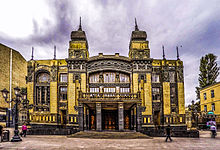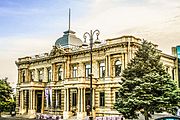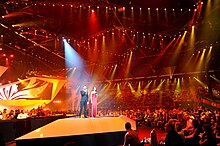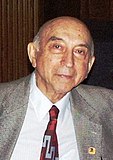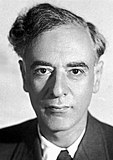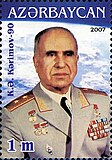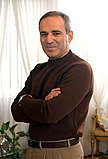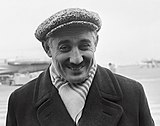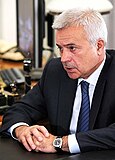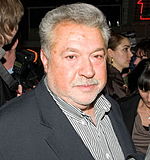Districts Of Baku
Baku is divided into twelve administrative raions and 48 townships. Among these are the townships on the islands of the Baku Archipelago, as well as the industrial settlement of Neft Daşları built on oil rigs 60 kilometres (37 miles) away from Baku city in the Caspian Sea. The Old City, containing the Palace of the Shirvanshahs and the Maiden Tower, was designated as a UNESCO World Heritage Site in 2000.
The city is the scientific, cultural, and industrial centre of Azerbaijan. Many sizeable Azerbaijani institutions have their headquarters there. In the 2010s, Baku became a venue for major international events. It hosted the 57th Eurovision Song Contest in 2012, the 2015 European Games, 4th Islamic Solidarity Games, the European Grand Prix in 2016, the Azerbaijan Grand Prix since 2017, the final of the 2018–19 UEFA Europa League, UEFA Euro 2020 and 2024 United Nations Climate Change Conference. The Baku International Sea Trade Port is capable of handling two million tonnes of general and dry bulk cargoes per year. Baku is renowned for its harsh winds, reflected in its nickname, the "City of Winds".
Etymology
Baku is long attested under the Perso-Arabic name باکو (Bākū). Early Arabic sources also refer to the city as Bākuh and Bākuya, all of which seem to come from a Persian name. The further etymology is unclear.
A popular etymology in the 19th century considered it to be derived from Persian بادکوبه (Bâd-kube, meaning "wind-pounded city", a compound of bād, "wind", and kube, which is rooted in the verb کوبیدن kubidan, "to pound", thus referring to a place where wind would be strong and pounding, as is the case of Baku, which is known to experience fierce winter snow storms and harsh winds). This popular name (Badkubə in modern Azerbaijani script) gained currency as a nickname for the city by the 19th century (e.g., it is used in Akinchi, volume 1, issue 1, p. 1), and is also reflected in the city's modern nickname as the "City of Winds" (Azerbaijani: Küləklər şəhəri). Another and even less probable folk etymology explains the name as deriving from Baghkuy, meaning "God's town". Baga (now بغ bagh) and kuy are the Old Persian words for "god" and "town" respectively; the name Baghkuy may be compared with Baghdād ("God-given") in which dād is the Old Persian word for "give".
During Soviet rule, the city was spelled in Cyrillic as "Бакы" in Azerbaijani (while the Russian spelling was and still is "Баку", Baku). The modern Azerbaijani spelling, which has been using the Latin alphabet since 1991, is Bakı; the shift from the Perso-Arabic letter و (ū) to Cyrillic "ы" and, later, Latin "ı" may be compared to that in other Azerbaijani words (e.g. compare قاپو qāpū in old Perso-Arabic spelling with modern Azerbaijani qapı, "door") or in suffixes, as و was often used to transcribe the vowel harmony in Azerbaijani (which was also the practice in Ottoman Turkish). (See also Azerbaijani alphabet.)
History
Antiquity

Traces of human settlement in the region of present-day Baku date back to the Stone Age. Bronze Age rock carvings have been discovered near Bayil, and a bronze figure of a small fish in the territory of the Old City. These have led some to suggest the existence of a Bronze-Age settlement within the city's territory. Near Nardaran, a place called Umid Gaya features a prehistoric observatory, where images of the sun and of various constellations are carved into rock together with a primitive astronomic table. Further archeological excavations have revealed various prehistoric settlements, native temples, statues and other artifacts within the territory of the modern city and around it.
In the 1st century AD, the Romans organised two Caucasian campaigns and reached what is today Baku. Near the city, in what is today Gobustan, Roman inscriptions dating from AD 84 to 96 survive – some of the earliest written evidences for a city there.
According to the 6th-century archbishop and historian St. Sophronius of Cyprus, in 71, St. Bartholomew the Apostle was preaching Christianity in the city of Albana or Albanopolis, associated with present-day Baku or Derbent, both located by the Caspian Sea. St. Bartholomew managed to convert even members of the local royal family who had worshipped the idol Astaroth, but was later martyred by being flayed alive and crucified head down on orders from the pagan king Astyages. The remains of St. Bartholomew were secretly transferred to Mesopotamia.
Rise of the Shirvanshahs and the Safavid era
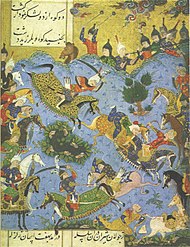
Baku was the realm of the Shirvanshahs during the 8th century AD. The city frequently came under assault from the Khazars and (starting from the 10th century) from the Rus'. Akhsitan I built a navy in Baku and successfully repelled a Rus' assault in 1170. After a devastating earthquake struck Shamakhi, the capital of Shirvan, Shirvanshah's court moved to Baku in 1191.

The Shirvan era greatly influenced Baku and the remainder of present-day Azerbaijan. Between the 12th and 14th centuries, massive fortifications were built in Baku and the surrounding towns. The Maiden Tower, the Ramana Tower, the Nardaran Fortress, the Shagan Castle, the Mardakan Castle, the Round Castle and also the Sabayil Castle on the island of the Bay of Baku date from this period. The city walls of Baku were also rebuilt and strengthened.
By the early 16th century, Baku's wealth and strategic position attracted the attention of its larger neighbours; in the previous two centuries, it was under the rule of the Iran-centred Kara Koyunlu and Ak Koyunlu. The fall of the Ak Koyunlu brought the city immediately into the sphere of the newly formed Iranian Safavid dynasty, led by king (shah) Ismail I (r. 1501–1524). Ismail I laid siege to Baku in 1501 and captured it; he allowed the Shirvanshahs to remain in power, under Safavid suzerainty. His successor, king Tahmasp I (r. 1524–1576), completely removed the Shirvanshahs from power and made Baku a part of the Shirvan province. Baku remained as an integral part of his empire and of successive Iranian dynasties for the next centuries, until ceded to the Russian Empire through the 1813 Treaty of Gulistan. The House of Shirvan, which had ruled Baku since the 9th century, was extinguished in the course of Safavid rule.
At this time, the city was enclosed within lines of strong walls, which were washed by the sea on one side and protected by a wide trench on land. The Ottomans briefly gained control over Baku as a result of the Ottoman-Safavid War of 1578–1590; by 1607, it came under Iranian control again. In 1604 Shah Abbas I (r. 1588–1629) destroyed Baku fortress.

Baku had a reputation as a focal point for traders from across the world during the Early modern period; commerce was active and the area prospered. Notably, traders from the Indian subcontinent established themselves in the region. These Indian traders built the Ateshgah of Baku during 17th–18th centuries; the temple was used as a Hindu, Sikh, and Zoroastrian place of worship.
Downfall of the Safavids and the Khanate of Baku
The Safavids temporarily lost power in Iran in 1722; Emperor Peter the Great of Russia took advantage of the situation and invaded. As a result of the Russo-Persian War of 1722–1723, the Safavids were forced to cede Baku to Russia. By 1730 the situation had deteriorated for the Russians; the successes of Nader Shah (r. 1736–1747) led them to sign the Treaty of Ganja near Ganja on 10 March 1735, ceding the city and all other conquered territories in the Caucasus back to Iran.
The eruption of instability following Nader Shah's death in 1747 gave rise to the various Caucasian khanates. The semi-autonomous Persian-ruled
Russo-Persian Wars and Iran's cession

From the late 18th century, Imperial Russia switched to a more aggressive geopolitical stance towards its two neighbours and rivals to the south, namely Iran and the Ottoman Empire. In the spring of 1796, by Catherine II's order, General Valerian Zubov's troops started a large campaign against Qajar Persia. Zubov had sent 13,000 men to capture Baku, and it was overrun subsequently without any resistance. On 13 June 1796, a Russian flotilla entered Baku Bay, and a garrison of Russian troops was stationed inside the city. Later, however, Emperor Paul I of Russia ordered the cessation of the campaign and the withdrawal of Russian forces following the death of his predecessor, Catherine the Great. In March 1797 the tsarist troops left Baku and the city became part of Qajar Iran again.
In 1813, following the Russo-Persian War of 1804–1813, Qajar Iran had to sign the Treaty of Gulistan with Russia this provided for the cession of Baku and of most of Iran's territories in the North Caucasus and South Caucasus to Russia. During the next and final bout of hostilities between the two, the Russo-Persian War of 1826–1828, the Iranians briefly recaptured Baku. However, the militarily superior Russians ended this war with a victory as well, and the resulting Treaty of Turkmenchay (1828) made Baku's inclusion in the Russian Empire definite. When Baku was occupied by the Russian troops during the war of 1804–13, nearly the entire population of some 8,000 people was ethnic Tat. Baku within Russia was the administrative center of the Baku Uyezd, Baku Governorate, and the Baku Gradonachalstvo.
Discovery of oil

The Russians built the first oil-distilling factory in Balaxani in 1837. The first person to drill oil in Baku was an ethnic Armenian Ivan Mirzoev, who is also known as a 'founding father of Baku's oil industry.' Digging for oil began in the 1840s, with the first oil well drilled in the Bibi-Heybat suburb of Baku in 1846. Large-scale oil exploration started in 1872 when the Russian imperial authorities auctioned parcels of oil-rich land around Baku to private investors. The pioneer of oil extracting from the bottom of the sea was the Polish geologist Witold Zglenicki. Soon after, investors appeared in Baku, including the Nobel Brothers in 1873 and the Rothschilds in 1882. An industrial area of oil refineries, better known as Black Town (Russian: Чёрный город), developed near Baku by the early 1880s.
Professor A. V. Williams Jackson of Columbia University wrote in his work From Constantinople to the Home of Omar Khayyam (1911):
Baku is a city founded upon oil, for to its inexhaustible founts of naphtha it owes its very existence, its maintenance, its prosperity... At present Baku produces one-fifth of the oil that is used in the world, and the immense output in crude petroleum from this single city far surpasses that in any other district where oil is found. Verily, the words of the Scriptures find illustration here: 'the rock poured me out rivers of oil. Oil is in the air one breathes, in one's nostrils, in one's eyes, in the water of the morning bath (though not in the drinking water, for that is brought in bottles from distant mineral springs), in one's starched linen – everywhere. This is the impression one carries away from Baku, and it is certainly true in the environs.
By the beginning of the 20th century, half of the oil sold in international markets was extracted in Baku. The oil boom contributed to the massive growth of Baku. Between 1856 and 1910 Baku's population grew at a faster rate than that of London, Paris, New York, or Tokyo.
World War I
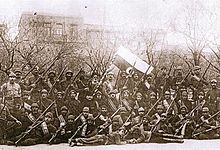

In 1917, after the October Revolution and amidst the turmoil of World War I and the Russian Revolution, Baku came under the control of the Baku Commune, led by the veteran Bolshevik Stepan Shahumyan. Seeking to capitalize on the existing ethnic conflicts, by spring 1918, Bolsheviks inspired and condoned civil war in and around Baku. During the March Days of 1918, Bolsheviks and Dashnaks, seeking to establish control over Baku streets, faced armed Azerbaijani groups. The Azerbaijanis suffered defeat from the united forces of the Baku Soviet and were massacred by Dashnak teams in what was called the March Days. An estimated 3,000–12,000 Azerbaijanis were killed in their own capital. After the massacre, on 28 May 1918, the Azerbaijani faction of the Transcaucasian Sejm proclaimed the independence of the Azerbaijan Democratic Republic (ADR) in Ganja, thereby founding the first Muslim-majority democratic and secular republic. The newly independent Azerbaijani republic, being unable to defend the independence of the country on their own, asked the Ottoman Empire for military support in accordance with clause 4 of the treaty between the two countries. Shortly after, Azerbaijani forces, with support of the Ottoman Army of Islam led by Nuru Pasha, started their advance on Baku, eventually capturing the city from the loose coalition of Bolsheviks, SRs, Dashnaks, Mensheviks and British forces under the command of General Lionel Dunsterville on 15 September 1918.
After the Battle of Baku of August–September 1918, the Azerbaijani irregular troops, with the tacit support of the Turkish command, conducted four days of pillaging and killing 10,000–30,000 Armenians of Baku. This pogrom became known as the "September Days". Shortly after this, Baku was proclaimed the new capital of the Azerbaijan Democratic Republic.
The Ottoman Empire, recognising defeat in World War I by October 1918, signed the Armistice of Mudros with the British (30 October 1918); this meant the evacuation of Turkish forces from Baku. Headed by General William Thomson, some 5,000 British troops, including parts of the former Dunsterforce, arrived in Baku on 17 November. Thomson declared himself military governor of Baku and implemented martial law in the city until "the civil power would be strong enough to release the forces from the responsibility to maintain the public order". British forces left before the end of 1919.
Soviet period
The independence of the Azerbaijani republic was a significant but short-lived chapter in Baku's history. On 28 April 1920, the 11th Red Army invaded Baku and reinstalled the Bolsheviks, making Baku the capital of the Azerbaijan Soviet Socialist Republic.
The city underwent many major changes. As a result, Baku played a great role in many branches of Soviet life. Baku was the major oil city of the Soviet Union. From about 1921 the city was headed by the Baku City Executive Committee, commonly known in Russian as Bakgorispolkom. Together with Baku Party Committee (known as the Baksovet), it developed the economic significance of the Caspian metropolis. From 1922 to 1930 Baku became the venue for one of the major trade fairs of the Soviet Union, serving as a commercial bridgehead to Iran and the Middle East.
World War II
The major powers continued to note Baku's growing importance as a major energy hub. During World War II (1939–1945) and particularly during the 1942 Nazi German invasion of the southwestern Soviet Union, Baku became of vital strategic importance to the Axis powers. In fact, capturing the oil fields of Baku was a primary goal of the Wehrmacht's Operation Edelweiss, carried out between May and November 1942. However, the German Army reached only a point some 530 kilometres (329 miles) northwest of Baku in November 1942, falling far short of the city's capture before being driven back during the Soviet Operation Little Saturn in mid-December 1942.
Fall of the Soviet Union and later
After the 1991 dissolution of the Soviet Union, Baku embarked on a process of restructuring on a scale unseen in its history. Thousands of panel buildings from the Soviet period were demolished to make way for a green belt on its shores; parks and gardens were built on the land reclaimed by filling up the beaches of the Baku Bay. Improvements were made in general cleaning, maintenance, and garbage collection to bring these services up to Western European standards. The city is growing dynamically and developing at pace on an east–west axis along the shores of the Caspian Sea. Sustainability has become a key factor in future urban development.
Geography
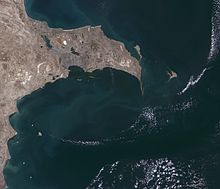
Baku is situated on the western coast of the Caspian Sea. In the vicinity of the city there are a number of mud volcanoes (Keyraki, Bogkh-bogkha, Lokbatan and others) and salt lakes (Boyukshor, Khodasan, etc.).
Climate
Baku has a cold semi-arid climate (Köppen climate classification: BSk) with hot and humid summers, cool and occasionally wet winters, and strong winds all year long. However, unlike many other cities with such climate features, Baku does not see extremely hot summers and substantial sunshine hours. This is largely because of its northerly latitude and the fact that it is located on a peninsula on the shore of the Caspian Sea.
Baku, and the Absheron Peninsula on which it is situated, is the most arid part of Azerbaijan (precipitation here is around or less than 200 mm (8 in) a year). This is largely due to the rain shadow effect from the Caucasus Mountains, with corresponding latitudes on the Black Sea on average receiving 2,300 mm (91 in) or more. The majority of the light annual precipitation occurs in seasons other than summer, but none of these seasons is particularly wet.
During Soviet times, Baku, with its long hours of sunshine and dry healthy climate, was a vacation destination where citizens could enjoy beaches or relax in now-dilapidated spa complexes overlooking the Caspian Sea. The city's past as a Soviet industrial centre left it one of the most polluted cities in the world, as of 2008.
At the same time, Baku is noted as a very windy city throughout the year, hence the city's nickname the "City of Winds", and gale-force winds, the cold northern wind khazri and the warm southern wind gilavar are typical here in all seasons. Indeed, the city is renowned for its fierce winter snow storms and harsh winds. The speed of the khazri sometimes reaches 144 km/h (89 mph), which can cause damage to crops, trees and roof tiles.
The daily mean temperature in July and August averages 26.4 °C (79.5 °F), and there is very little rainfall during that season. During summer, the khazri sweeps through, bringing desired coolness. Winter is cool and occasionally wet, with the daily mean temperature in January and February averaging 4.3 °C (39.7 °F). During winter, the khazri sweeps through, driven by polar air masses; temperatures on the coast frequently drop below freezing and make it feel bitterly cold. Winter snow storms are occasional; snow usually melts within a few days after each snowfall.
| Climate data for Baku (Maştağa) (1991–2020 normals) | |||||||||||||
|---|---|---|---|---|---|---|---|---|---|---|---|---|---|
| Month | Jan | Feb | Mar | Apr | May | Jun | Jul | Aug | Sep | Oct | Nov | Dec | Year |
| Record high °C (°F) | 20.4 (68.7) |
24.0 (75.2) |
27.8 (82.0) |
27.8 (82.0) |
35.0 (95.0) |
40.5 (104.9) |
42.7 (108.9) |
41.9 (107.4) |
39.4 (102.9) |
30.1 (86.2) |
25.0 (77.0) |
26.0 (78.8) |
42.7 (108.9) |
| Mean daily maximum °C (°F) | 7.3 (45.1) |
7.6 (45.7) |
10.9 (51.6) |
16.8 (62.2) |
23.4 (74.1) |
28.0 (82.4) |
30.5 (86.9) |
30.6 (87.1) |
25.8 (78.4) |
19.5 (67.1) |
13.4 (56.1) |
9.4 (48.9) |
18.6 (65.5) |
| Daily mean °C (°F) | 4.8 (40.6) |
4.7 (40.5) |
7.3 (45.1) |
11.9 (53.4) |
18.0 (64.4) |
23.2 (73.8) |
26.1 (79.0) |
26.5 (79.7) |
22.0 (71.6) |
16.7 (62.1) |
10.9 (51.6) |
6.6 (43.9) |
14.9 (58.8) |
| Mean daily minimum °C (°F) | 2.9 (37.2) |
2.7 (36.9) |
4.6 (40.3) |
8.9 (48.0) |
14.6 (58.3) |
19.7 (67.5) |
22.9 (73.2) |
22.5 (72.5) |
18.7 (65.7) |
13.2 (55.8) |
8.4 (47.1) |
4.7 (40.5) |
12.0 (53.6) |
| Record low °C (°F) | −13.7 (7.3) |
−8.4 (16.9) |
−7.0 (19.4) |
−6.1 (21.0) |
0.2 (32.4) |
10.0 (50.0) |
11.2 (52.2) |
11.9 (53.4) |
9.1 (48.4) |
1.2 (34.2) |
−2.8 (27.0) |
−5.5 (22.1) |
−13.7 (7.3) |
| Average precipitation mm (inches) | 32.4 (1.28) |
30.3 (1.19) |
18.4 (0.72) |
16.6 (0.65) |
15.1 (0.59) |
9.3 (0.37) |
3.9 (0.15) |
8.2 (0.32) |
28.5 (1.12) |
32.5 (1.28) |
44.3 (1.74) |
34.6 (1.36) |
274.1 (10.77) |
| Average precipitation days (≥ 1.0 mm) | 6 | 6 | 5 | 4 | 3 | 2 | 1 | 2 | 2 | 6 | 6 | 6 | 49 |
| Average snowy days | 4 | 3 | 0 | 0 | 0 | 0 | 0 | 0 | 0 | 0 | 0 | 3 | 10 |
| Mean monthly sunshine hours | 79.3 | 74.8 | 116.5 | 194.6 | 281.1 | 300.4 | 311.6 | 283.6 | 214.5 | 144.6 | 92.3 | 93.5 | 2,186.8 |
| Average ultraviolet index | 1 | 2 | 4 | 6 | 8 | 9 | 9 | 8 | 6 | 3 | 1 | 1 | 5 |
| Source 1: NOAA (precipitation days and sun 1971–1990) Starlings Roost Weather | |||||||||||||
| Source 2: Meoweather (Snowy days) infoclimat.fr (extremes) | |||||||||||||
Administrative divisions
Baku is divided into 12 rayonlar (sub-rayons) (administrative districts) and 5 settlements of city type.
Demographics
Until 1988, Baku had very large Russian, Armenian, and Jewish populations which contributed to cultural diversity and added in various ways (music, literature, architecture and progressive outlook) to Baku's history. With the onset of the First Nagorno-Karabakh War and the pogrom against Armenians starting in January 1990, the city's large Armenian population was expelled. After the collapse of the Soviet Union, Azerbaijani President Heydar Aliyev returned several synagogues and a Jewish college, nationalised by the Soviets, to the Jewish community; he encouraged the restoration of these buildings. Seven of the original 11 synagogues, including the Gilah synagogue, built in 1896, and the large Kruei Synagogue, were renovated.
| Year | Tatars | Russians | Armenians | Jews | Others | TOTAL | |||||
|---|---|---|---|---|---|---|---|---|---|---|---|
| Number | % | Number | % | Number | % | Number | % | Number | % | ||
| 1851 | 5,000+ | 67.3 | 405 | 5.5 | 7,431 | ||||||
| 1886 | 37,530 | 43.3 | 21,390 | 24.7 | 24,490 | 28.3 | 391 | 0.5 | 2,810 | 3.2 | 86,611 |
| 1897 | 40,341 | 36.0 | 37,399 | 33.4 | 19,099 | 17.1 | 3,369 | 3.0 | 11,696 | 10.5 | 111,904 |
| 1903 | 44,257 | 28.4 | 59,955 | 38.5 | 26,151 | 16.8 | 28,513 | 18.3 | 155,876 | ||
| 1913 | 45,962 | 21.4 | 76,288 | 35.5 | 41,680 | 19.4 | 9,690 | 4.5 | 41,052 | 19.1 | 214,672 |
| 1916 | 69,366 | 26.4 | 79,702 | 30.4 | 62,357 | 23.8 | 6,412 | 2.4 | 44,585 | 17.0 | 262,422 |
| Year | Turks | Russians | Armenians | Jews | Others | TOTAL | |||||
|---|---|---|---|---|---|---|---|---|---|---|---|
| Number | % | Number | % | Number | % | Number | % | Number | % | ||
| 1917 | 67,190 | 28.2 | 77,123 | 32.4 | 52,184 | 21.9 | 12,427 | 5.2 | 29,244 | 12.3 | 238,168 |
| 1926 | 118,737 | 26.2 | 167,373 | 36.9 | 76,656 | 16.9 | 19,589 | 4.3 | 70,978 | 15.7 | 453,333 |
| Year | Azerbaijanis | Russians | Armenians | Jews | Others | TOTAL | |||||
|---|---|---|---|---|---|---|---|---|---|---|---|
| Number | % | Number | % | Number | % | Number | % | Number | % | ||
| 1939 | 215,482 | 27.4 | 343,064 | 43.6 | 118,650 | 15.1 | 31,050 | 3.9 | 79,377 | 10.1 | 787,623 |
| 1959 | 211,372 | 32.9 | 223,242 | 34.7 | 137,111 | 21.3 | 24,057 | 3.7 | 56,725 | 8.7 | 652,507 |
| 1970 | 586,052 | 46.3 | 351,090 | 27.7 | 207,464 | 16.4 | 29,716 | 2.3 | 88,193 | 6.9 | 1,262,515 |
| 1979 | 530,556 | 52.4 | 229,873 | 22.7 | 167,226 | 16.5 | 22,916 | 2.3 | 62,865 | 6.2 | 1,013,436 |
| January 1990: Baku pogrom. Massacre and expulsion of Armenian population | |||||||||||
| 1999 | 1,574,252 | 88.0 | 119,371 | 6.7 | 378 | 0.02 | 5,164 | 0.3 | 89,689 | 5.0 | 1,788,854 |
| 2009 | 1,848,107 | 90.3 | 108,525 | 5.3 | 104 | 0.01 | 6,056 | 0.6 | 83,023 | 4.1 | 2,045,815 |
Ethnic groups
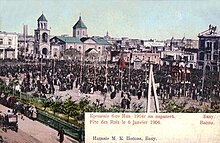
Today, the vast majority of Baku's population is made up of ethnic Azerbaijanis, and the rest are Talysh, Russians, Lezgi and others. The intensive growth of the population started in the middle of the 19th century when Baku was a small town with a population of about 7,000 people. The population increased again from about 13,000 in the 1860s to 112,000 in 1897 and 215,000 in 1913, making Baku the largest city in the Caucasus region.
Baku has been a cosmopolitan city at certain times during its history, meaning ethnic Azerbaijanis did not constitute the majority of population. It was only in the 1970s that ethnic Azerbaijanis achieved demographic dominance in Baku. In 2003 Baku additionally had 153,400 internally displaced persons and 93,400 refugees.
Religion
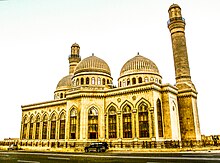
The religion with the largest community of followers is Islam. The majority of the Muslims are Shia Muslims, and the Republic of Azerbaijan has the second-highest Shia population percentage in the world, after Iran. The city's notable mosques include Juma Mosque, Bibi-Heybat Mosque, Muhammad Mosque and Taza Pir Mosque.
There are some other faiths practised among the different ethnic groups within the country. By article 48 of its Constitution, Azerbaijan is a secular state and ensures religious freedom. Religious minorities include Russian Orthodox Christians, Catholic Levantines, Georgian Orthodox Christians, Albanian-Udi Apostolic Christians, Lutherans, Ashkenazi Jews, and Sufi Muslims. Baku is the seat of the Catholic Apostolic Prefecture of Azerbaijan.
Zoroastrianism, although extinct in the city as well as in the rest of the country by the present time, had a long history in Azerbaijan and the Zoroastrian New Year (Nowruz) continues to be the main holiday in the city as well as in the rest of Azerbaijan.
Economy


Baku's largest industry is petroleum, and its petroleum exports make it a large contributor to Azerbaijan's balance of payments. The existence of petroleum has been known since the 8th century. In the 10th century, the Arabian traveler, Marudee, reported that both white and black oil were being extracted naturally from Baku. By the 15th century, oil for lamps was obtained from hand-dug surface wells. Commercial exploitation began in 1872, and by the beginning of the 20th century the Baku oil fields were the largest in the world. Towards the end of the 20th century, much of the onshore petroleum had been exhausted, and drilling had extended into the sea offshore. By the end of the 19th century skilled workers and specialists flocked to Baku. By 1900 the city had more than 3,000 oil wells, of which 2,000 were producing oil at industrial levels. Baku ranked as one of the largest centres for the production of oil industry equipment before World War II. The World War II Battle of Stalingrad was fought to determine who would have control of Baku oil fields. Fifty years before the battle, Baku produced half of the world's oil supply.
The oil economy of Baku is undergoing a resurgence, with the development of the massive Azeri-Chirag-Guneshli field (Shallow water Gunashli by SOCAR, deeper areas by a consortium led by BP), development of the Shah Deniz gas field, the expansion of the Sangachal Terminal and the construction of the BTC Pipeline.
The Baku Stock Exchange is Azerbaijan's largest stock exchange, and largest in the Caucasian region by market capitalization. A relatively large number of transnational companies are headquartered in Baku. One of the more prominent institutions headquartered in Baku is the International Bank of Azerbaijan, which employs over 1,000 people. International banks with branches in Baku include HSBC, Société Générale and Credit Suisse.


